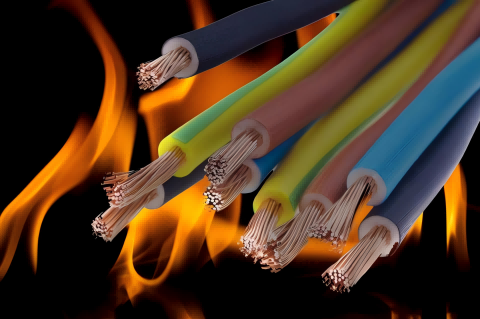When selecting cables and wires, clearly defining the requirements and focusing on quality and specifications are key to ensuring safety and durability. Firstly, the appropriate type of cable should be chosen based on the usage scenario. For example, household wiring typically uses PVC (Polyvinyl Chloride) insulated cables, while industrial environments, which may be subject to harsh conditions, often require cables with higher resistance to heat and corrosion, such as those with XLPE (Cross-Linked Polyethylene) insulation. For outdoor use, cables with Aluminum Foil Mylar Tape as shielding material are preferred to enhance weather resistance and waterproof performance. Additionally, it is essential to calculate the load current and select the appropriate cable specification based on the power rating of the electrical equipment, ensuring that the conductor material, such as oxygen-free copper or tinned copper, has sufficient conductivity to prevent overheating or malfunction due to overload.
Regarding product quality, it is advisable to choose cables that are certified by organizations like CCC and ISO 9001, ensuring that they meet national quality standards. Furthermore, high-quality cables should have a smooth, round appearance with uniform color. The insulation layer should be free from bubbles or impurities and have consistent thickness. As for the conductor material, copper conductors should be reddish-purple, with a shiny surface and tightly twisted strands, while aluminum conductors should be silver-white. If copper conductors appear purple-black or contain impurities, they may be made from inferior materials, so caution should be exercised.
When selecting the cable specification, the conductor cross-sectional area should be considered in relation to the load current and the operating environment. A larger conductor cross-section allows for higher current-carrying capacity but increases the cost. Therefore, balancing both economy and safety is essential. Additionally, the number of cores should be selected according to the actual needs: single-phase circuits typically use two or three-core cables, while three-phase circuits require three or four-core cables. By thoroughly evaluating the usage scenario and technical requirements, the selected cables will be both cost-effective and capable of reliable long-term operation.
For special scenarios, such as high-temperature environments, high-temperature-resistant cables, such as fire-resistant cables with mica tape wrapping or XLPE insulated cables, can maintain stable performance in industrial furnaces or high-temperature workshops. For high-rise buildings and public spaces where fire safety is a priority, fire-resistant, flame-retardant, or halogen-free flame-retardant cables are safer options. These cables typically feature special fire-resistant layers or include water-blocking tapes to reduce the risk of fire spread and enhance safety.
Finally, choosing a reputable brand and reliable supplier is critical. Well-known brands typically have stricter manufacturing processes and quality control, ensuring better performance and offering comprehensive after-sales service. Purchasing from legitimate channels, such as large construction material markets or certified distributors, not only guarantees the authenticity of the products but also ensures timely support in case of issues. It is advisable to avoid buying from unverified sources to prevent purchasing counterfeit or substandard products.
Choosing cables and wires is a systematic process that requires careful attention at each stage, from scenario requirements and material performance to product quality and supplier reputation. Proper selection not only ensures safety but also significantly enhances the service life and efficiency of the products.
Post time: Jan-17-2025



